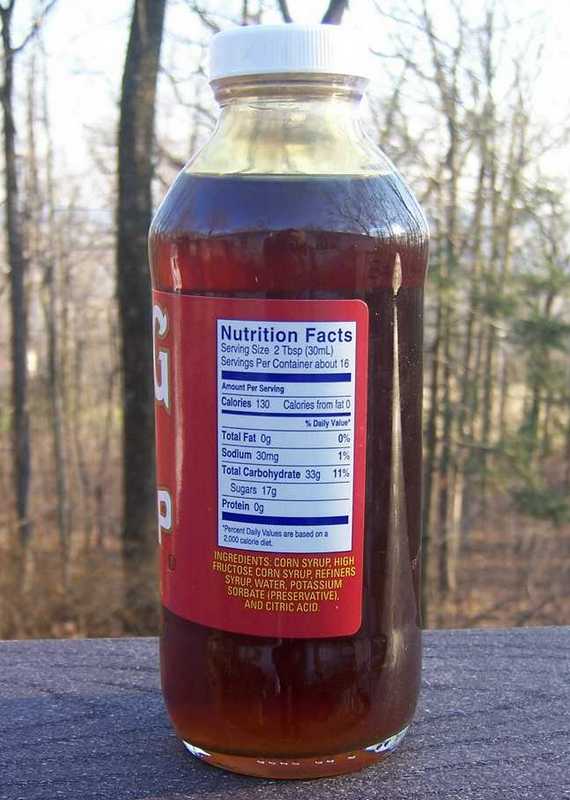


|
 GeneticallyModifiedFoods.The terms genetically-modified (GM) or genetically-engineered (GE) foods and genetically-modified organisms (GMOs) refer to crop plants created for human or animal consumption using the latest molecular biology techniques. These techniques of modern genetics have made possible the direct manipulation of the geneticmakeup of organisms. Good and evil are moral choices humans are free to make. As applied to technology, these moral choices present great opportunities and great dangers. We manipulate atoms to light our buildings and to make weapons of mass destruction. Companies produce chemicals to make our lives easier, but sometimes cut corners in the management, storage and disposal to maximize profits. We utilize coal, oil and gas for our cars, businesses and utility needs, but these same natural resources pollute our air and water without adequate protections. Twenty first century choices face us in stem cell research, cloning and genetically modified foods. Proponents and opponents present their cases and policy-makers are faced with protecting the public interest. Unfortunately, human history is littered with cases of indiscretions by people with evil intentions. It is within this context that we look at the case for genetically modified and engineered organisims and foods. We support prudent use of genetically modified foods. We believe that labels should be placed on all GM products. We also understand the risks involved, but believe the benefits far outweigh the costs. Starvation is much more dangerous to more people than any threat presented by GM foods. Droughts and famine are increasing throughout the world, particularly on the continent of Africa. Although some traditional environmental groups insist that they are simply providing facts about potential health and environmental effects of GM foods, others oppose it as a Frankenstein product. Of course, none of these groups have programs to feed the world's hungry. Some USA based social justice groups, such as the Africa Faith & Justice Network are opposing USA policies that impose GM food aid on southern African countries facing severe drought and famine. In addition to concerns about health effects, they think it is a tactic to blatantly benefit agri-business, not poor and hungry people. We understand the health concerns, but see nothing wrong with agri-business profiting from such exchanges. Captialism feeds America. In fact, Americans are suffering more from overeating than lack of food. As planetary managers, we must understand that there are no benign systems that can provide for human needs and we are obligated to protect the planet to the maximum extent possible. The fight over the use of genetically modified corn provides a good example to illustrate the issues involved in the use of this product. Interestingly, one of the leading opponents to new GM produce, Europe, has preliminarily approved(January 2004) the sale of GM corn via the European Commission. The Council of Ministers will make a final decision this year. Opponents promise to sue to stop the use of GM corn in the EU. Environmental opponents believe GM products threaten biodiversity and will release potentially harmful contaminants into the environment. We support Friend of the Earth's proposed "GM Contamination and Liability Bill" being introduced in the British Parliament. The bill calls for a strict approach to any future planting of GM crops, including those planted for trial purposes. It stipulates minimum separation distances between GM and organic/conventional crops, clarifys liability issues if cross-contamination occurs, and ensures the regulation of GM is simple and that all overseeing bodies are self-funded. We do not support the Five Year Freeze associated with the bill. Genetically modified technology will not eliminate hunger and malnutrition because dysfunctional governments and economies create problems with production, access and distribution of food. All types of foods and organisms have been genetically engineered: corn, cotton, tomatoes, soybeans, sugarbeets, oilseed rape, maize, salmon, pigs, cows, and the list goes on. With about 6 billion people eating everyday, we need every reasonable tool known to man to assure adequate nutrition for Earth's residents. GM foods, property utilized, can help meet these needs in a number of ways: pest resistance, herbicide tolerance, disease resistance, cold tolerance, drought tolerance and salinity toleranc, among others. Many countries are growing GM crops: U.S., Canada, China, Argentina, Australia, Bulgaria, France, Germany, Mexico, Romania, South Africa, Spain and Uruguay. Interestingly, according the USDA approximately 54% of all soybeans cultivated in the U.S. in 2000 were genetically-modified. In the U.S., three government agencies have jurisdiction over GM foods: EPA evaluates GM plants for environmental safety, the USDA evaluates whether the plant is safe to grow, and the FDA evaluates whether the plant is safe to eat. Mandatory food labeling is also a complex issue. The FDA's current position on food labeling is govered by the Food, Drug and Cosmetic Act, which is only concerned with food additives, not whole foods or food products that are considered GRAS (Generally Recognized As Safe).
|






 your heart as saturated fat, and cause an estimated 30,000 to 100,000 premature heart disease deaths each year.
your heart as saturated fat, and cause an estimated 30,000 to 100,000 premature heart disease deaths each year. ttacks, insulin resistance, diabetes, and belly fat.
ttacks, insulin resistance, diabetes, and belly fat. And that's a good thing: Sodium is necessary for life. It helps regulate blood pressure, maintains the body's fluid balance, transmits nerve impulses, makes muscles -- including your heart -- contract, and keeps your senses of taste, smell, and touch working properly. You need a little every day to replace what's lost to sweat, tears, and other excretions.
And that's a good thing: Sodium is necessary for life. It helps regulate blood pressure, maintains the body's fluid balance, transmits nerve impulses, makes muscles -- including your heart -- contract, and keeps your senses of taste, smell, and touch working properly. You need a little every day to replace what's lost to sweat, tears, and other excretions.
 Combining genes from different organisms is known as recombinant DNA technology and the resulting organism is said to be "genetically modified," "genetically engineered," or "transgenic." . Like most human planetary management issues today, such as global climate change, the GM foods issue is hugely complex. GM foods have great promise and great dangers. AAEA leans in the direction of aggressive market production with needed oversight regulations in a global management context. If all goes well, one thing is certain, we will have to feed about 12 billion people everyday in the next 50 years.
Combining genes from different organisms is known as recombinant DNA technology and the resulting organism is said to be "genetically modified," "genetically engineered," or "transgenic." . Like most human planetary management issues today, such as global climate change, the GM foods issue is hugely complex. GM foods have great promise and great dangers. AAEA leans in the direction of aggressive market production with needed oversight regulations in a global management context. If all goes well, one thing is certain, we will have to feed about 12 billion people everyday in the next 50 years. One major advantage of GM food is that crops genetically engineered to resist weeds and bugs enable farmers to decrease pesticide and herbicide use. Of course, superweeds and bugs could also be inadvertently created. Planetary management is very complex and serious business.
One major advantage of GM food is that crops genetically engineered to resist weeds and bugs enable farmers to decrease pesticide and herbicide use. Of course, superweeds and bugs could also be inadvertently created. Planetary management is very complex and serious business. Flawed policies, greed and imcompetence will always keep some people in ignorance and poverty. However, GM foods can improve survivability and increase productivity of plants in inhospital conditions. GM foods can also reduce the need to use large quantities of herbicides andpesticides. Of course, this does not stop Mendocino County, California -- considered by some to be the center of America's anti-biotechnology movement-- from holding a vote to prohibit GM plants and animals from being raised or kept in the county. Such anti-GM entitites consider it to be the biggest uncontrolled biological experiment going on in the world today. Although proof of serious harm to humans, animals and plants has yet to be definitively proven, opponents fear that humans and the environment could be damaged through accidental cross-pollination of GM products with natural plants. This is a legitimate fear, but is not sufficient to ban the use of all GM products. Proponents point out that negative effects are nonexistent, pointing out that not a single stomach ache has been reported since the Food and Drug Administration first approved genetically engineered crops for human consumption in 1994. Great Britain's Food Standards Agency also favors the use of GM foods. Of course, most health effects of concern, including cancer and the results of long-term damage to the immune system take years to become evident. And then there would be the complex task of directly associating any damaging effects with GM products.
Flawed policies, greed and imcompetence will always keep some people in ignorance and poverty. However, GM foods can improve survivability and increase productivity of plants in inhospital conditions. GM foods can also reduce the need to use large quantities of herbicides andpesticides. Of course, this does not stop Mendocino County, California -- considered by some to be the center of America's anti-biotechnology movement-- from holding a vote to prohibit GM plants and animals from being raised or kept in the county. Such anti-GM entitites consider it to be the biggest uncontrolled biological experiment going on in the world today. Although proof of serious harm to humans, animals and plants has yet to be definitively proven, opponents fear that humans and the environment could be damaged through accidental cross-pollination of GM products with natural plants. This is a legitimate fear, but is not sufficient to ban the use of all GM products. Proponents point out that negative effects are nonexistent, pointing out that not a single stomach ache has been reported since the Food and Drug Administration first approved genetically engineered crops for human consumption in 1994. Great Britain's Food Standards Agency also favors the use of GM foods. Of course, most health effects of concern, including cancer and the results of long-term damage to the immune system take years to become evident. And then there would be the complex task of directly associating any damaging effects with GM products. The FDA contends that GM foods are substantially equivalent to non-GM foods, and therefore not subject to more stringent labeling. If all GM foods and food products are to be labeled, Congress must enact sweeping changes in the existing food lableling policy. The Genetically Engineered Food Right to Know Act (HR 2916) is probably a good place to start for food labeling.
The FDA contends that GM foods are substantially equivalent to non-GM foods, and therefore not subject to more stringent labeling. If all GM foods and food products are to be labeled, Congress must enact sweeping changes in the existing food lableling policy. The Genetically Engineered Food Right to Know Act (HR 2916) is probably a good place to start for food labeling.